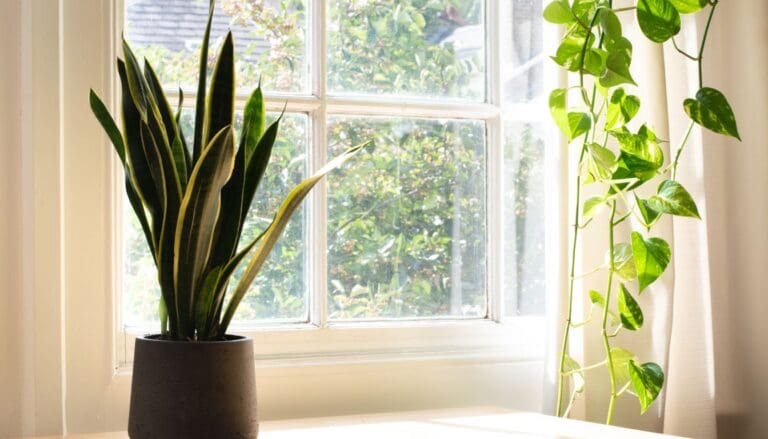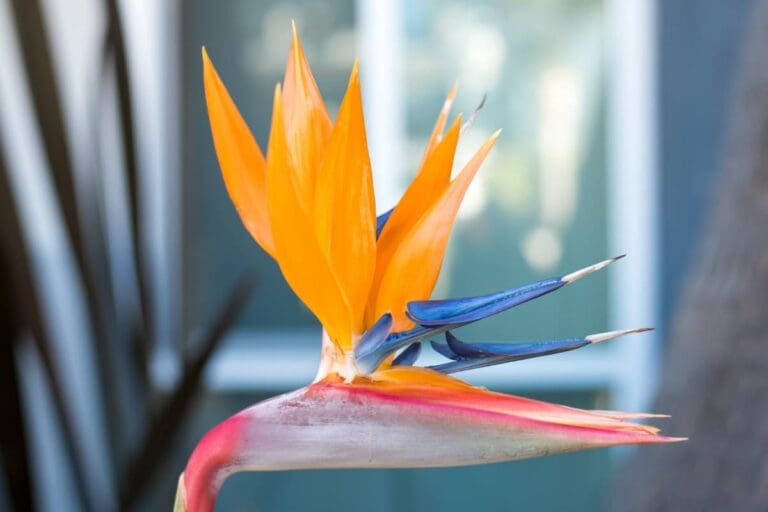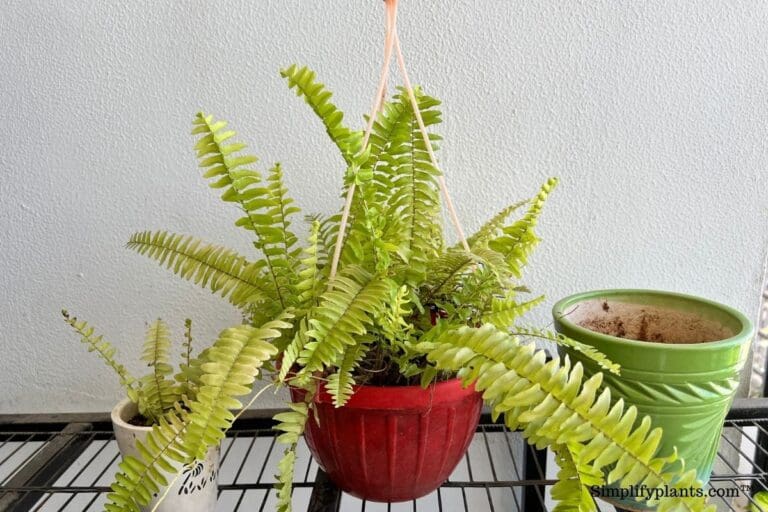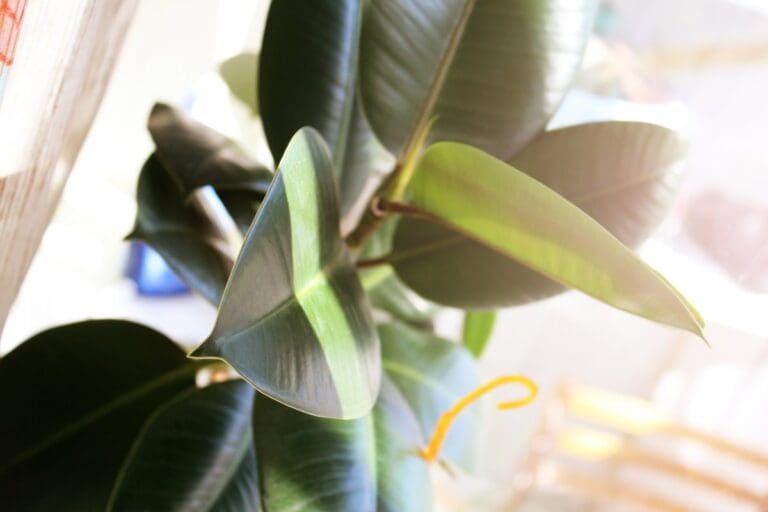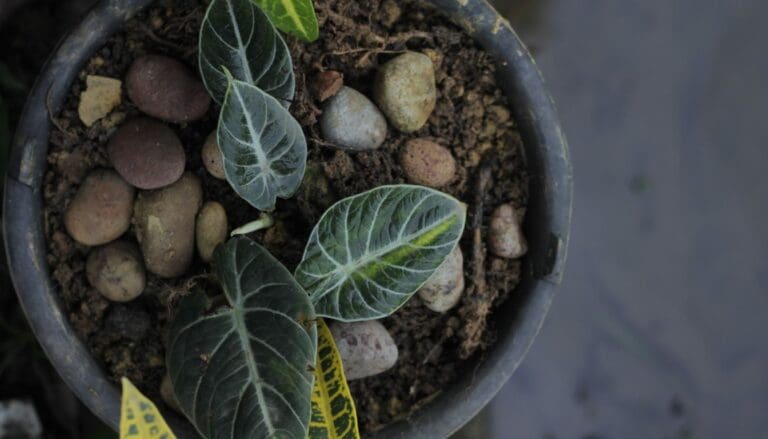How Often To Water Jade Plant? (+When & How Much)
The Jade Plant is an evergreen plant that can be grown indoors and outdoors. They have thick branches with sparkling and smooth leaves.
The color of the leaves is usually rich green, although improper watering might lead to yellowing of leaves. So, it is crucial to understand the water requirement of your jade plant.
As a general rule, the jade plant needs to be watered every 2-3 weeks. But first, you need to check the soil and make sure the top two inches are dry before watering them. Then, every time you water the jade plant, make sure you water the plant thoroughly, so every root corner gets water.
Jade plants generally require little care, but some of the things are obliged to be taken care of.
Factors like when and how often should you water jade plants and how to tell when a jade plant needs water are something you should be well aware of. We will cover all your queries one by one below.

Please note: Simplify Plants is reader-supported. Some links in the post are affiliate links and I get a commission from purchases made through links in the post.
When to water jade plant?
It is crucial to water the jade plant properly. It needs to be watered, but too much watering is not ideal for the jade plant. Season also matters to ascertain when they need water that every grower must know.
How often to water jade plant in summer?

During the summer season, jade plants start to proliferate. Consequently, it requires more water than other times of the year. Therefore, it is essential to water it profoundly during summer at regular intervals.
As a general rule, you need to water your jade plant every two weeks during the summer season.
You need to water your jade plant thoroughly and let the soil get dry before the next watering.
Jade plants hold water in their leaves; that is why it does not need moist soil consistently.
However, it would be best if you did not leave jade plants without watering. Therefore, it is crucial to check the soil and water the plant at correct time intervals.
How often to water jade plant in winter?

During winter, the plant’s growth slows down, or sometimes it even pauses its growth entirely due to changes in the environment.
The soil also takes a long time to dry out. Thus, you should only water your jade plant when the soil dries out.
As a general rule, a jade plant needs to be watered every 2-3 weeks, considering the soil gets dried out during that period.
However, don’t water the plant when the soil is already moist as it will result in overwatering, which is harmful to the plant.
A fully grown jade plant does not need to be watered following a particular schedule. Instead, water them only when the soil is fully dry and in need of water.
During winters, these intervals can last even for a month as these plants go to sleep, and the sunlight is also not that bright.
Although the jade plant needs good lighting during the winter, you need to keep jade plants away from the cold drafts.
Signs a jade plant needs water

Generally, jade plants need very little care, but it will show some signs when it gets thirsty. The primary signal is the yellow spots over the leaves.
One needs to water the jade plant only when the upper layer of the soil gets dry out, not before that. During summer, one or two weeks intervals are suitable before watering.
By using the finger/skewer method, you will know if your jade plant needs water. Dig your finger or skewer in the soil up to a few inches and take it out in a few seconds. If the soil is sticky to your finger or skewer, then the soil is still moist. You can wait till the soil is dry from within.
Look for the following signs in your jade plants to understand if they are dehydrated.
Dry and brown leaf tips
Jade plants are succulent, which means they do not need much water. However, constant checking is vital. Underwatering may cause drying and browning of the leaves.
Dry and brown leaf tips are some signs of an under-watered jade plant. Due to lack of water, the plant starts looking dry, and the tips of the leaves start turning brown.
It would be best if you watered it as the soil gets dry. This will reduce the drying and browning of the leaves. However, leaving your plant underwatered for a long time might result in dry and brown tips.
Dry Soil
Dryness of the soil of your jade plant is another way to know the soil is dry or dehydrated. They are dehydrated due to lack of water, and the soil will turn light brown and seem parched.
Even the nutrients are not able to move from one part to another due to lack of water.
If you are a beginner, you can use a moisture meter to check the soil’s moisture level and water them on time.
Soil pulling away from the edge of the top
The most common reason behind the soil pulling away is underwatering. The soil is very dry and pulling away due to dehydration.
Jade plant’s soil and roots are dehydrated, and the nutrients are grieving to supply all over the plant. As a result, your plant will start looking dull.
Too much exposure to direct sun, high temperature, and underwatering are reasons for the soil and roots getting dehydrated.
Droopy Leaves
Jade plants are succulents, but you cannot skip watering all the time and expect its leaves to stay firm. They store water but need to be watered to keep its leaves, stems, and roots healthy.
When the leaves droop or wilt, they have been going through dehydration for a long time.
Underwatering is the most common reason behind droopy leaves. When it appears that the leaves of the jade plant are dying, the most common cause is improper watering.
You must keep the upper layer of the soil slightly moist without drowning them.
Factor affecting the water requirement of jade plant
Jade plants are all-season plants, but they need some care to stay in good health. Some factors affecting its need for water during different situations and the environment can be spotted below.
Light

Morning and evening sunlight is best for a jade plant’s growth. Light is one of the most critical factors for the plant’s growth and for discovering the water conditions.
The more sunlight the plant gets, the more watering is needed. In the same way, if the sunlight is weak, then the water requirement also goes down.
Pot Type

Jade plants like their soil dry and aerated, and choosing the right pot type can help a lot to maintain the same. The main point is to let the soil dry before watering.
If your plant is growing in porous pots, it will need water more frequently because the soil will dry out faster.
Porous pots do not let the soil get soggy and let the air flow easily in the roots and soil. As a result, the soil will be healthier and need water more frequently.
If you are using plastic pots, you will notice that your jade plant’s soil is taking a long time to dry out. This is because plastic pots are not porous; hence keep the soil wet and take longer to dry out.
Keeping the roots of the jade plant bounded in a small pot is recommended as it keeps it more manageable.
Temperature

With the change in the temperature, the water needs of the plant also change. Therefore, an ideal temperature range for the jade plant is the room temperature ranging between 65°F-75°F.
If the temperature is higher than the frequency of water, the needs of the plants will increase.
If the temperature level is lower than the required one, then the frequency of water need will also reduce.
Humidity
Jade plants are desert plants. They generally like low humidity. Therefore, it is best to place your jade plant inside the room where the humidity level is between 32% to 50%.
If the humidity level is high most of the time, the soil will take more time to dry.
However, humidity is not that much important for deciding the water needs of the jade plant. But too much or too little can be an effective factor in the long term.
Soil

Jade plants are adaptive to rocky and sandy soil with low fertility but quick drainage. Therefore, the soil mix is an essential factor in determining their need for water.
If the soil mix is poorly draining and heavy, then the soil will take a lot of time to dry out completely. They will need good air circulation around them to dry completely and avoid rotting.
Aerated soil mix will be taking less duration to dry out, hence increasing the frequency of the water for your jade plant.
You can determine the soil’s moistness using a moisture meter, especially when the soil mix is heavy. Because just checking the topsoil of a rich soil mix is not enough, the soil can be wet from within.
Season
Season also plays a role in deciding when to water your jade plant. Your jade plant likes dry soil, and they take different times to dry in different seasons.
In the summer, the soil of your jade plant will dry out rapidly. As a result, they will need watering more often and need frequent check-ups.
In winter, the plant will not require frequent watering as the soil will take a longer time to dry out.
How much water do jade plants need?

Jade plants are succulents, and they need water only when their soil gets dry. Therefore, you must be very cautious while watering the jade plant.
It does not need water at regular intervals. Overwatering and underwatering are equally harmful to the jade plant. Both may cause damage to the plant.
The general requirement of watering jade plants is 2-3 days intervals during hot summer and spring days.
While during winters, these intervals may last even for a week or two. This also needs to be checked because different growers have different conditions where their plant is growing.
Also read: How Long Can House Plants Go Without Water? (With 25 Examples)
Signs of under-watered jade plant
Dropping off the leaves, shriveled leaves, and brown spots on the leaves are some of the indications that your jade plant needs more water.
Dry tips of the leaf, less growth of the plant, and soil pulling away also show your plant needs water.
Sign of overwatered jade plant
Rotting of the root, foul odor from the plant, weakening of the leaves, or the squishiness of the leaves are signs of an overwatered jade plant.
Also, if the soil remains wet, it indicates that your plant is getting excessive water.
Related question
Should I mist my jade plant?
Splashing of the water on the leaves must be avoided as it exposes the jade plant to the surrounding environment, leading to the burning of the leaves. In addition, misting them may lead to patches on the leaves and attract pests.
Can you water the jade plant with tap water?
You can water the jade plant with tap water. However, you must avoid water containing too much iron and salt in it. In addition, jade plants are sensitive plants. Thus you need to be careful with the type of water you use.
Fill a bucket of water and let it sit overnight before watering your jade plants. That way, any chemicals like chlorine will get eliminated, and the water becomes somewhat safe to be used.
Also read: 9 Indoor Gardening Mistakes That You Didn’t Realize You Are Making
Source: NYBG, The University of Arkansas, University of Florida, Phytochemical and Antimicrobial Activity of Jade Plant, CABI, University of Minnesota, The University of Missouri.
Recommended Garden Supplies
| Product Image | Our Recommended Gardening Supplies | Check Offers! |
|---|---|---|
Top Top
Top
Top
Top
Top
Top
Top
Top | rePotme Houseplant and Tropical Classic Potting Soil Mix | Check Offer On Amazon |
 Top
Top
Top
Top
Top
Top
Top
Top | Espoma Organic Indoor Plant Food | Check Offer On Amazon |
 Top
Top
Top
Top
Top
Top
Top
Top | GooingTop LED Grow Light 6000K Full Spectrum Clip Plant Growing Lamp | Check Offer On Amazon |
 Top
Top
Top
Top
Top
Top
Top
Top | Soil Moisture Meter | Check Offer On Amazon |
 Top
Top
Top
Top
Top
Top
Top
Top | Govee Hygrometer Thermometer, Bluetooth Enabled! | Check Offer On Amazon |
 Top
Top | LEVOIT Humidifiers for Large Room(Best For Plants) | Check Offer On Amazon |
 Top
Top
Top
Top
Top
Top
Top
Top | Upgraded DIY Automatic Drip Irrigation Kit, 15 Potted Houseplants Support | Check Offer On Amazon |
 Top
Top
Top
Top
Top
Top
Top
Top | Stainless Steel Heavy Duty Gardening Tool Set | Check Offer On Amazon |
 Top
Top
Top
Top
Top
Top
Top
Top | Bonide Insecticidal Soap | Check Offer On Amazon |
 Top
Top
Top
Top
Top
Top
Top
Top | Bonide 32 oz Spray Neem Oil for Organic Gardening | Check Offer On Amazon |
 Top
Top
Top
Top
Top
Top
Top
Top | Garden Safe Fungicide | Check Offer On Amazon |

